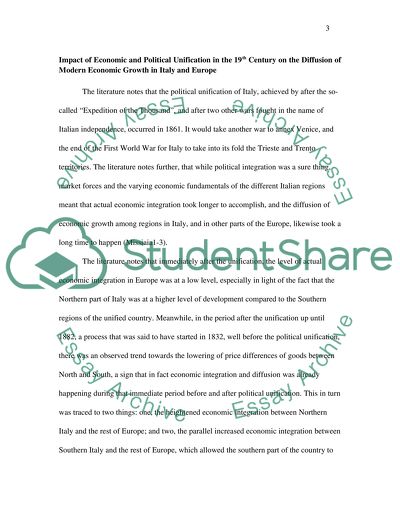Diffusion of Modern Economic Growth in Italy and Europe Research Paper. Retrieved from https://studentshare.org/macro-microeconomics/1447284-diffusion-of-modern-economic-growth-in-italy-and
Diffusion of Modern Economic Growth in Italy and Europe Research Paper. https://studentshare.org/macro-microeconomics/1447284-diffusion-of-modern-economic-growth-in-italy-and.


